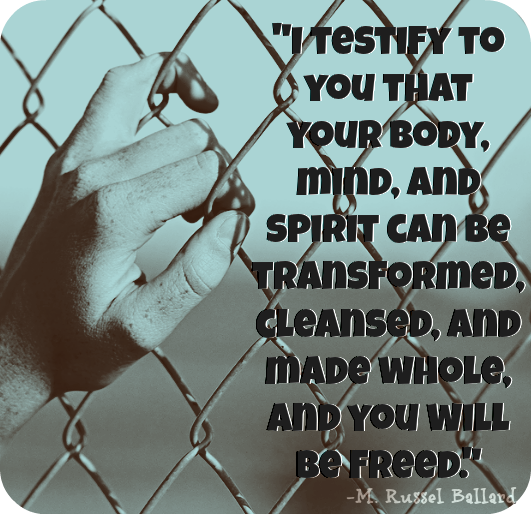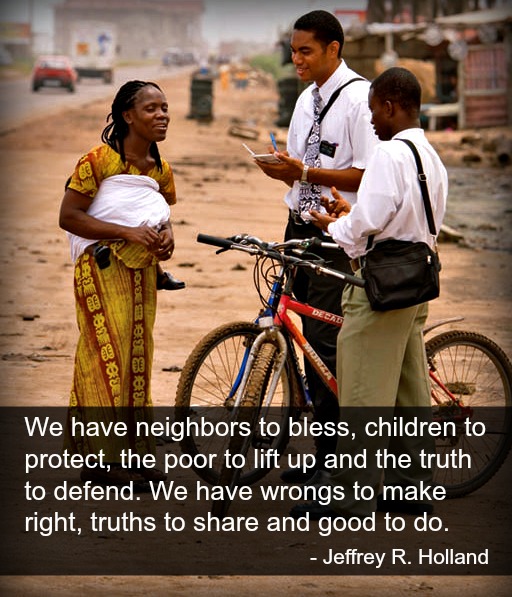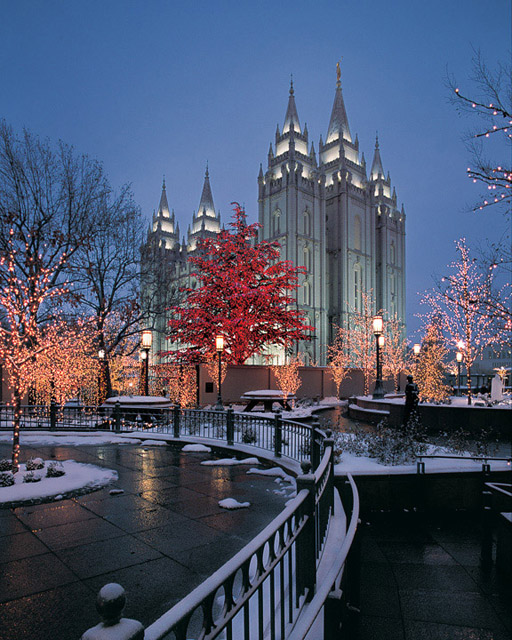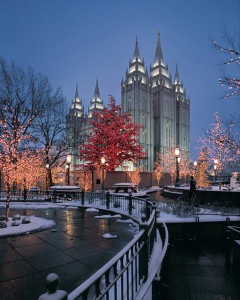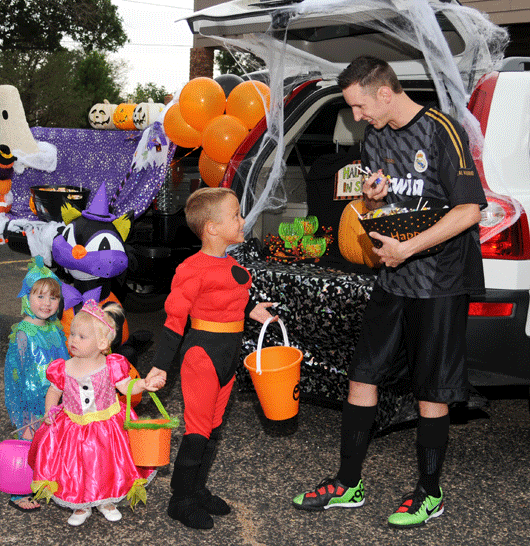
The Paradigm Shift of Halloween
The date of 31 October is normally considered by most people as the day in which Halloween is celebrated. On this day, kids and adults alike dress up in costumes of various genres, and the kids go trick-or-treating from door-to-door, or the kids and their parents attend neighborhood Halloween parties. However, in company with all the frivolity and joviality of the ongoing celebrations which take place on Halloween night, the date of 31 October also holds a place of significance in the pages of history. That in conjunction with the history of Halloween itself is perhaps something that few people know anything about.
The History of Halloween
Halloween is believed to have begun with the ancient Celtic festival known as Samhain (pronounced sow-in). During the festival, people would light bonfires and wear costumes when leaving their homes in an effort to keep any ghosts that might be roaming about away.
According to the history.com page on the History of Halloween:
By 43 A.D., the Roman Empire had conquered the majority of Celtic territory. In the course of the four hundred years that they ruled the Celtic lands, two festivals of Roman origin were combined with the traditional Celtic celebration of Samhain. The first was Feralia, a day in late October when the Romans traditionally commemorated the passing of the dead. The second was a day to honor Pomona, the Roman goddess of fruit and trees. The symbol of Pomona is the apple and the incorporation of this celebration into Samhain probably explains the tradition of “bobbing” for apples that is practiced today on Halloween.
By the eighth century, Pope Gregory III (731–741) declared November 1 as a time to honor all saints and martyrs. The holiday became known as All Saints’ Day, also called All-hallows or All-hallowmas (from Middle English Alholowmesse meaning All Saints’ Day), and incorporated some of the traditions of the Samhain festival. The evening prior to All Saints’ Day became known as All-hallows Eve, and then later, what is today called Halloween.
 Throughout the centuries, Halloween has become a nonreligious, commercialized, community-based event that is characterized by such children-centered pursuits as trick-or-treating. An interesting factoid about Halloween is that one quarter of all the candy sold annually in the U.S. is purchased for Halloween. It is reported that Americans spend an estimated $6 billion annually on Halloween, making it the country’s second largest commercial holiday.
Throughout the centuries, Halloween has become a nonreligious, commercialized, community-based event that is characterized by such children-centered pursuits as trick-or-treating. An interesting factoid about Halloween is that one quarter of all the candy sold annually in the U.S. is purchased for Halloween. It is reported that Americans spend an estimated $6 billion annually on Halloween, making it the country’s second largest commercial holiday.
Referring again to the history.com page on the History of Halloween:
In the late 1800s, there was a move in America to mold Halloween into a holiday more about community and neighborly get-together than about ghosts, pranks and witchcraft. At the turn of the century, Halloween parties for both children and adults became the most common way to celebrate the day. Parties focused on games, foods of the season and festive costumes. Parents were encouraged by newspapers and community leaders to take anything “frightening” or “grotesque” out of Halloween celebrations. Because of these efforts, Halloween lost most of its superstitious and religious overtones by the beginning of the twentieth century.
In several countries throughout the world, as the season changes from fall to winter with shorter days and colder nights, many people welcome that change with gatherings, costumes, and delectable sugary treats.
October 31 and the Course of History
Although some people may be somewhat familiar with the historical background of the Halloween celebration, there are perhaps some significant facts surrounding the date of October 31 that they may not be aware of. The following are only a few examples of significant events that occurred in History on October 31 which may also warrant celebration.
 On 31 October 1517, Martin Luther, a German friar, Catholic priest, professor of theology and influential figure of the 16th-century movement in Christianity known later as the Protestant Reformation, posted his Ninety-five Theses on the church door in Wittenberg, Germany. According to the history.com page on Martin Luther and the 95 Theses:
On 31 October 1517, Martin Luther, a German friar, Catholic priest, professor of theology and influential figure of the 16th-century movement in Christianity known later as the Protestant Reformation, posted his Ninety-five Theses on the church door in Wittenberg, Germany. According to the history.com page on Martin Luther and the 95 Theses:
The 95 Theses, which would later become the foundation of the Protestant Reformation, were written in a remarkably humble and academic tone, questioning rather than accusing. The overall thrust of the document was nonetheless quite provocative. The first two of the theses contained Luther’s central idea, that God intended believers to seek repentance and that faith alone, and not deeds, would lead to salvation. The other 93 theses, a number of them directly criticizing the practice of indulgences (remission of the temporal punishment due to sin, the guilt of which has been forgiven), supported these first two.
Former military members who fought in Vietnam and their families may also recall that it was on 31 October 1968 when President Lyndon B. Johnson ordered an end to the U.S. Bombing of North Vietnam. The Vietnam War, also known as the Second Indochina War, and also known in Vietnam as Resistance War against America or simply the American War, officially ended on 30 April 1975.
October 31st is also a day to commemorate the birth of Juliette Gordon Low, the founder of the Girl Scouts, who was born on 31 October 1860.
Being born and raised as a Baptist, as I peruse the pages of Baptist history, it is noted that Lewis Peyton Little speaking of John Waller and the early Separate Baptist preachers of Virginia wrote, “preachers of that day endured the most inhuman treatment and bodily suffering in order that they might make disciples for their Lord.” However, the bodily suffering and imprisonment in the county jails proved to be superficial as compared to the bitterness of the scorn and ridicule that they endured for the cause of religious liberty. An example of such scorn and ridicule was aptly illustrated in the following announcement which appeared in the Virginia Gazette of 31 October 1771:
A Recipe to Make an Anabaptist Preacher in Two Days Time
Take the Herbs of Hypocrisy and Ambition, of each an Handful, of the Spirit of Pride two Drams, of the Seed of Dissention and Discord one Ounce, of the Flower of Formality three Scruples, of the Roots of Stubbornness and Obstinacy four Pounds; and bruise them altogether in the Mortar of Vain-Glory, with the Pestle of Contradiction, putting amongst them one Pint of the Spirit of Self-conceitedness. When it is luke-warm let the Dissenting Brother take two or three Spoonfuls of it, Morning and Evening before Exercise; and whilst his Mouth is full of the Electuary he will make a wry Face, wink with his Eyes, and squeeze out some Tears of Dissimulation. Then let him speak as the Spirit of Giddiness gives him Utterance. This will make the Schismatic endeavor to maintain his Doctrine, wound the Church, delude the People, justify their Proceedings of Illusions, foment Rebellion, and call it by the Name of Liberty of Conscience. (Lewis Peyton Little, Imprisoned Preachers and Religious Liberty in Virginia (Lynchburg, Va.: J. P. Bell Co., 1938), pp. 233-34.)
Mormon history is also replete with its equitable share of riveting events that all occurred on 31 October. The following is a small listing of some of those events. The information was obtained from LDS Living.com online magazine dated 31 October 2013.
| Year | Event |
| 1833 | Violence erupted in Jackson County, Missouri as local citizens attempted to expel Church members. |
| 1838 | Missouri militia officers demanded that the Saints give up their arms, pay for the cost of the war, leave the state, and surrender Joseph Smith, Sidney Rigdon, Lyman Wight, Parley P. Pratt, and George W. Robinson. George Hinkle, colonel of the Mormon forces guarding Far West, agreed to the demands and lured Joseph Smith and the others into the mob’s camp, where they are immediately taken prisoner. |
| 1847 | President Brigham Young of the Twelve returned to Winter Quarters from his pioneer trek to the Salt Lake Valley, having made the return trip in only 67 days. |
| 1856 | The Willie Handcart Company was met by 10 rescue wagons full of supplies and food. |
| 1913 | William E. Hall, later a World War II pilot and U.S. Congressional Medal of Honor recipient (1943) for helping sink an enemy aircraft carrier and managing to land his aircraft safely, all while seriously injured, was born in Storrs, Utah. |
| 1918 | The First Presidency, the Quorum of the Twelve Apostles, and the Church Patriarch accepted and endorsed President Joseph F. Smith’s Vision of the Redemption of the Dead as the word of the Lord. |
| 1949 | The Great Lakes Mission was organized. |
| 1978 | The Sao Paulo Brazil Temple was dedicated by Spencer W. Kimball in one of several sessions. |
| 1979 | The first branch of the Church in the Netherlands Antilles (two island groups in the Caribbean Sea) was organized. |
| 1985 | Elder Thomas S. Monson dedicated Yugoslavia for the preaching of the gospel. |
The Essential Question: Should Christians Celebrate Halloween?
It should be noted that there are no scriptural references that define the guidelines as to whether Christians should or should not celebrate the secular holiday of Halloween. With that as a premise, it then proves somewhat of a challenge to give a definitive answer to the question. Ultimately, it becomes an individual decision and each person must follow their own convictions about whether or not to observe Halloween.
Some families will decide not to celebrate Halloween because of the secular message that they believe is conveyed through such celebration. However, instead of focusing on the negative aspects of Halloween, there are ways to turn the day into a positive, relationship-building tradition for the family.
Some churches organize a Fall Carnival or Harvest Festival as an alternative to celebrating Halloween. This gives families an opportunity to socialize with other families in the spirit of fun and fellowship, and Bible theme costumes are worn.
 Pumpkin patches and associated activities such as a pumpkin carving contest, a pumpkin cook-off, a carving demonstration, or even a pumpkin bake sale are also viable alternatives to the traditional Halloween celebrations. Another option could be to organize a pumpkin patch project with neighbors. A family might also sponsor such an event on a small scale in their own neighborhood as an alternative to trick-or-treating.
Pumpkin patches and associated activities such as a pumpkin carving contest, a pumpkin cook-off, a carving demonstration, or even a pumpkin bake sale are also viable alternatives to the traditional Halloween celebrations. Another option could be to organize a pumpkin patch project with neighbors. A family might also sponsor such an event on a small scale in their own neighborhood as an alternative to trick-or-treating.
Some people may ask if members of The Church of Jesus Christ of Latter-day Saints (Mormons) celebrate holidays such as Halloween, and the answer is a resounding yes. Many members use trunk-or-treats in lieu of trick-or-treating. Children are allowed to dress up in costumes that are in keeping with the standards and teachings of the Church, however masks are not allowed to be worn just because of safety issues. Instead of going from door-to-door to receive treats, members have treats in the trunk of their cars and the children go from car-to-car to receive their sugary bounties. Some wards may also hold Halloween parties for their youth groups, or families may have their own special way of celebrating that creates lasting memories while at the same time teaching valuable principles.
Whether a family chooses to celebrate Halloween or not is strictly their choice. Furthermore, the significance of the date of October 31 also depends on the person. Some may even view it as just another day. Nevertheless, Halloween is only one event that occurs on that day which gives cause for some to celebrate. History, however, declares that there is much more to know about the date than one may realize giving way for other reasons to celebrate.

